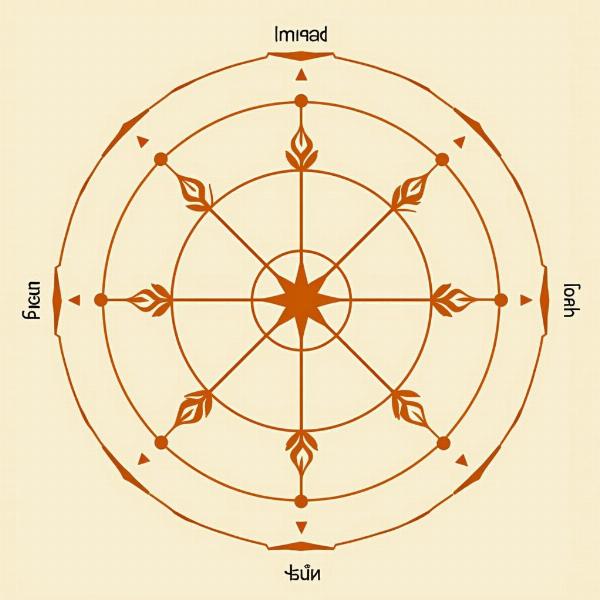Understanding the concept of “all directions” can be crucial in various contexts, from geographical understanding to philosophical interpretations. If you’re looking for the Hindi equivalent of “all directions,” you’ve come to the right place. This article will explore the various ways to express “all directions” in Hindi, delving into nuances, cultural significance, and practical usage.
Exploring “All Directions” in Hindi
The most common and straightforward translation of “all directions” in Hindi is “सभी दिशाएँ” (sabhi dishayen). This phrase literally translates to “all directions” and is widely understood. However, depending on the context, other phrases can convey a more nuanced meaning.
Alternative Phrases and Their Contexts
While “sabhi dishayen” is a general term, other phrases can add depth and specificity. For instance, “चारों दिशाएँ” (charon dishayen) refers to the “four directions” (north, south, east, and west). This term is often used in traditional contexts and ceremonies. Another option is “हर तरफ” (har taraf), meaning “everywhere” or “on all sides,” which emphasizes the pervasiveness of something. You might use this when talking about a sound coming from everywhere. Similarly, “दसों दिशाएँ” (dason dishayen) literally means “ten directions” and includes the four cardinal directions, four intermediate directions, and up and down. This term often carries spiritual connotations.
Cultural and Religious Significance of Directions in India
In Indian culture, directions hold significant importance, often associated with deities and symbolic meanings. East, for instance, is considered auspicious, associated with the rising sun and new beginnings. Different directions are also associated with different elements and energies. This cultural understanding adds depth to the meaning of “all directions,” sometimes implying a holistic or spiritual encompassment.
Practical Usage and Examples
Imagine describing a bird flying away. You could say, “पक्षी सभी दिशाओं में उड़ गया” (pakshi sabhi dishaon mein ud gaya) – “The bird flew in all directions.” Or, describing the spread of a fragrance, you could use “हर तरफ खुशबू फैल गई” (har taraf khushbu fail gayi) – “Fragrance spread everywhere.”
Which Phrase to Use?
Choosing the correct phrase depends entirely on the specific context. For general purposes, “sabhi dishayen” suffices. For specific references to the cardinal directions, “charon dishayen” is appropriate. When emphasizing pervasiveness or a spiritual connotation, consider “har taraf” or “dason dishayen,” respectively.
Conclusion
Understanding the various ways to express “all direction meaning in hindi” opens up a deeper understanding of the language and its cultural nuances. Whether you’re discussing geography, philosophy, or everyday occurrences, using the appropriate phrase can significantly enhance your communication. Choosing the right phrase will ensure clarity and precision in your expression.
FAQ:
- What is the most common way to say “all directions” in Hindi? सभी दिशाएँ (sabhi dishayen)
- What term refers to the four cardinal directions? चारों दिशाएँ (charon dishayen)
- What is the Hindi word for “everywhere”? हर तरफ (har taraf)
- What does “dason dishayen” signify? It refers to the ten directions, often used in spiritual contexts.
- How do I choose the correct phrase for “all directions”? Consider the context and the specific nuance you want to convey.
 Diagram Illustrating Ten Directions
Diagram Illustrating Ten Directions
Meaning-Hindi.in is your one-stop solution for all your Hindi translation needs. We offer a wide range of translation services, including business and commercial document translation, certified and legal document translation, technical and user manual translation, website and localization services, educational and academic document translation, express translation, and specialized translation services. Contact us today at [email protected] or call us at +91 11-4502-7584. Meaning-Hindi.in is dedicated to providing accurate and culturally sensitive translations. Let us help you bridge the language gap!